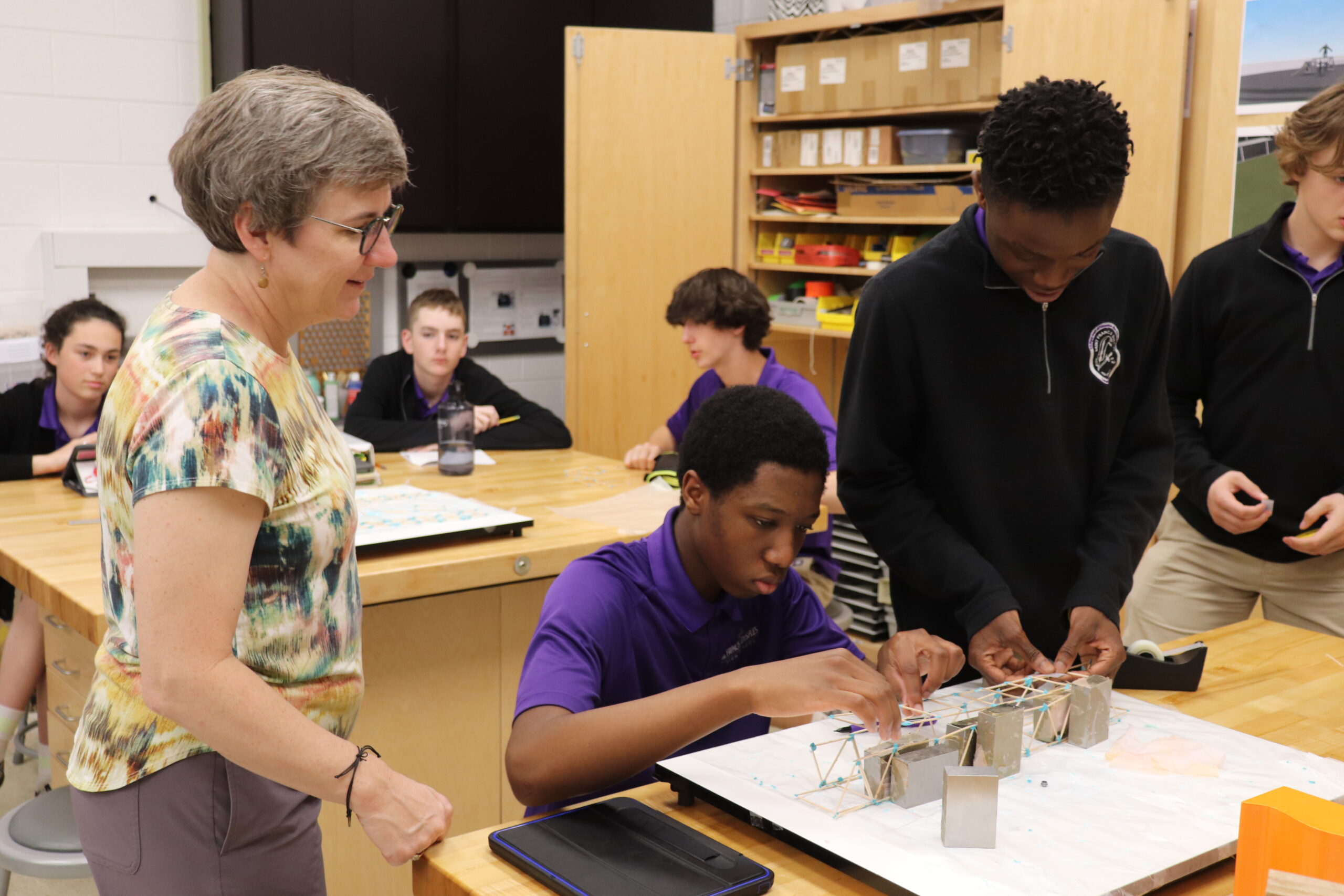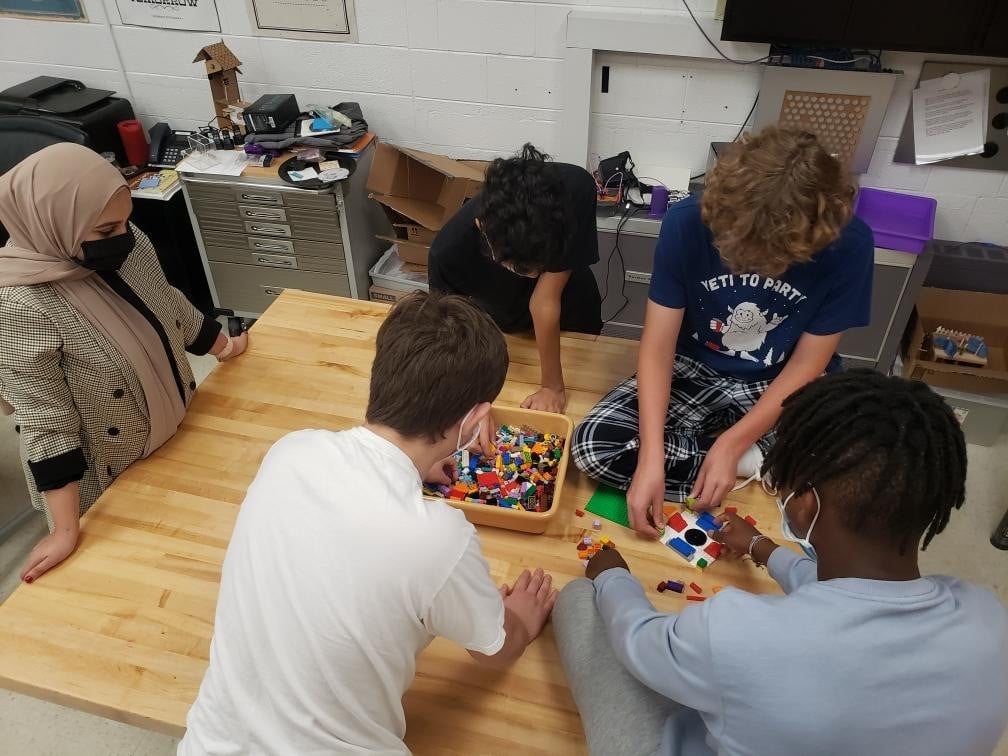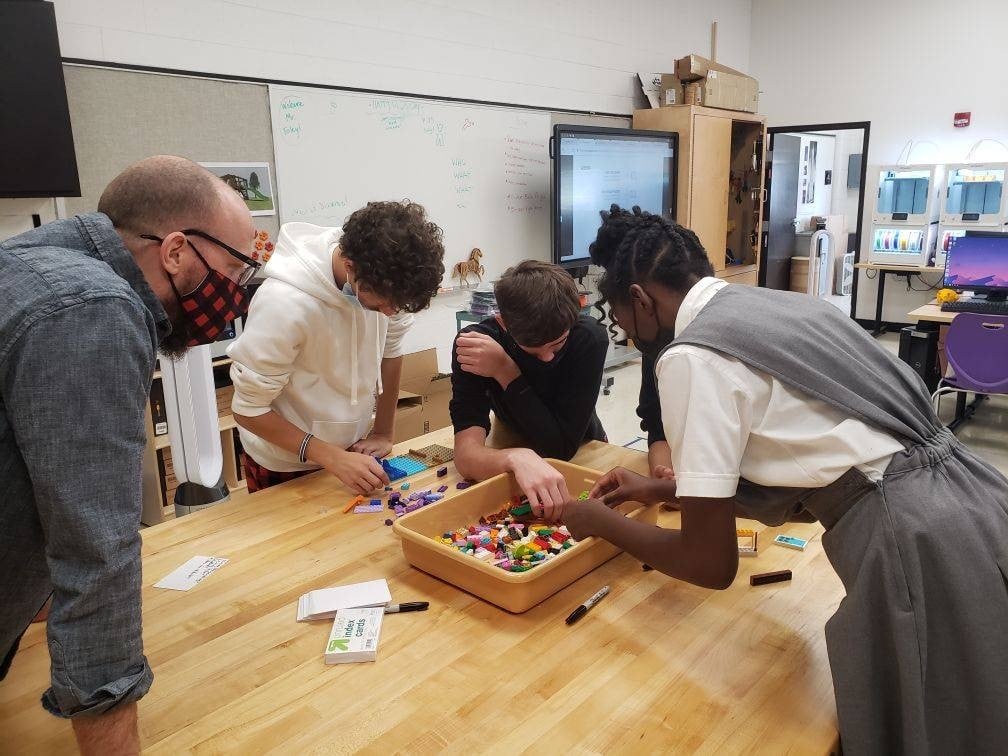Innovation, Engineering, and Architecture – Changing the Way Students Think and Learn – From Guest Blogger Kim Gattis
When I started at St. Francis DeSales six years ago, I was charged with developing a fledgling Construction Technology department into a college preparatory experience for not only students interested in engineering, product design, and architecture fields, but anyone interested in expanding their computer skills and understanding more of the way things work.
2022 has been a pivotal year for the department. We have renamed the program to truly reflect our offerings. Innovation, Engineering, and Architecture may be a mouthful to recite, it identifies with the broad spectrum of careers that build from the skills learned in the variety of courses offered. Additionally, we worked with our Instructional Technology office and the Computer Science department to launch a new course that every incoming freshman will be required to take. Inspire Technology, or as we affectionately call it, InTech will bridge the gap between all three to give students a better understanding of how technology is a robust set of tools to strengthen their learning experience at DeSales.

As it stands now, the Innovation, Engineering, and Architecture department offer four elective classes that will build upon the Inspire Technology class. Freshmen and sophomores may begin with the Introduction to CADD class and the Design Principles class as soon as their second semester at DeSales. While the intro class offers students a cursory introduction to computer-aided design through surface modeling software, presentation layout software, and use of additive and subtractive manufacturing; the Design Principles class teaches students how to use their own internal computer to problem solve, and construct models without the use of modern tools. The combination of the two provides students with a taste of how the skills are applied to a plethora of career paths including mechanical engineering, architecture, animation and game design, and others. Two additional classes in Advanced CADD and a year-long Architecture studio take upperclassmen into a deeper understanding of the software already covered as well as additional solid modeling software. More time is spent in these classes producing artifacts utilizing the technology and equipment available in the classroom. These students are introduced to additional career paths such as Interior Design, Urban Planning, Additive Engineering, and Materials Engineering.
As the courses advance, the small class sizes allow me to sculpt and steer the projects to include as many of the interests of the students as possible. This is where I become less of an expert, so I rely on others. We are so blessed with a network of professionals, especially Triad Architects. Many times, I have been able to reach out to our contacts to assist in offering a small workshop, meeting with a student about their college plans, or critiquing a class project. I look forward to continuing these relationships and expanding the horizons of our students.
WRITTEN BY KIM GATTIS



